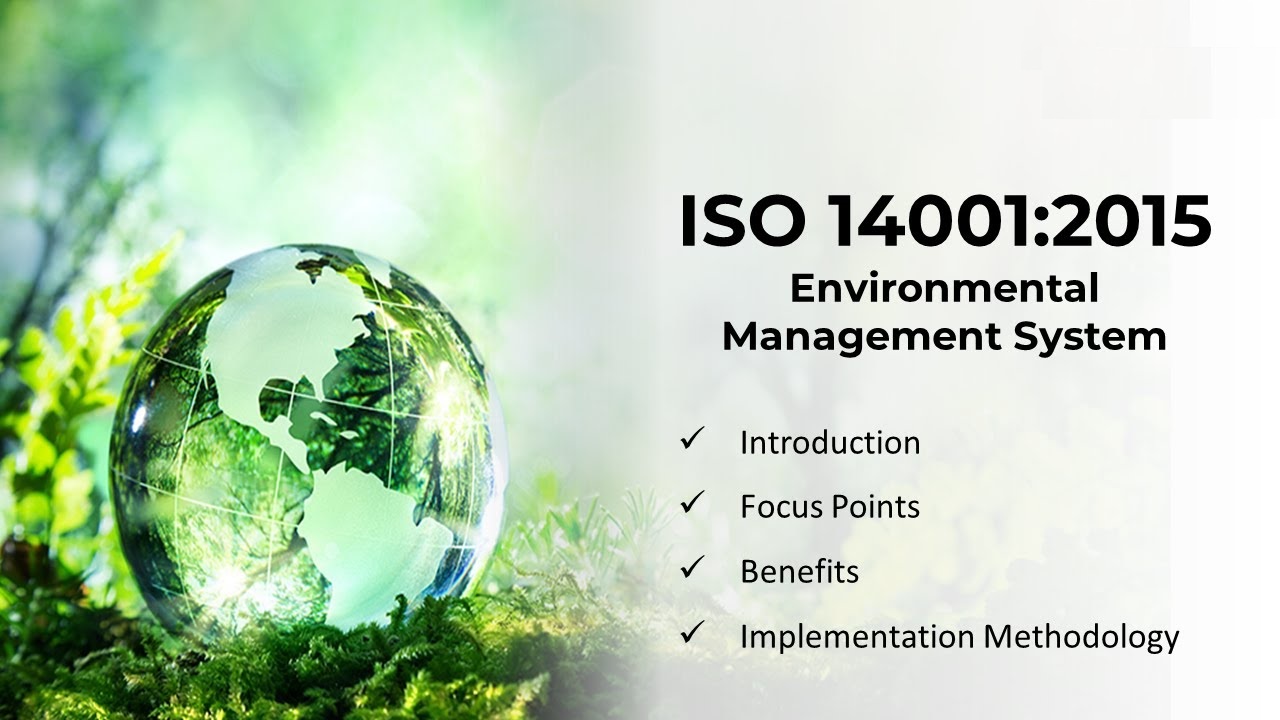
Benefits of Implementing ISO 14001 Management System:
1. Improved Environmental Performance: ISO 14001 helps organizations identify and manage their environmental aspects and impacts, leading to improved environmental performance and reduced environmental risks.
2. Compliance with Legal Requirements: By establishing procedures to identify and comply with applicable legal requirements and other environmental requirements, organizations can ensure compliance and reduce the risk of legal liabilities and penalties.
3. Cost Savings: Implementing an EMS can lead to cost savings through the optimization of resource use, energy efficiency improvements, waste reduction, and avoidance of environmental incidents and associated costs.
4. Enhanced Reputation and Stakeholder Confidence: ISO 14001 certification demonstrates an organization's commitment to environmental responsibility, which can enhance its reputation and build trust with customers, regulators, investors, and other stakeholders.
5. Competitive Advantage: ISO 14001 certification can provide a competitive advantage by differentiating the organization from competitors, opening up new business opportunities, and meeting customer requirements for environmental management.
6. Risk Management: ISO 14001 helps organizations identify, assess, and manage environmental risks and opportunities, enabling them to proactively address potential issues and capitalize on opportunities for improvement.
7. Continuous Improvement: The framework of ISO 14001 promotes a culture of continuous improvement, where organizations regularly evaluate their environmental performance, set objectives and targets for improvement, and implement actions to achieve them.
ISO 14001 is an internationally recognized standard
for environmental management systems (EMS). It provides a framework for
organizations to establish, implement, maintain, and improve environmental
performance. Here's an overview of the key components and benefits of an ISO
14001 management system:
Key
Components of ISO 14001 Management System:
1. Environmental Policy: Organizations develop and
implement an environmental policy that outlines their commitment to compliance
with legal and other requirements, pollution prevention, and continual
improvement of environmental performance.
2. Environmental Aspects and Impacts Assessment:
Organizations identify the environmental aspects of their activities, products,
and services, evaluate the potential environmental impacts associated with
these aspects, and determine significant impacts to prioritize actions for
control and improvement.
3. Legal and Other Requirements: Organizations
establish procedures to identify, access, and ensure compliance with applicable
legal requirements and other environmental requirements to which the
organization subscribes.
4. Objectives and Targets: Based on the
environmental policy and assessment of environmental aspects and impacts,
organizations establish measurable environmental objectives and targets at
relevant functions and levels, consistent with the commitment to prevention of
pollution, compliance obligations, and continual improvement.
5. Environmental Management Programs: Organizations
develop and implement environmental management programs to achieve their
environmental objectives and targets, including actions to address risks and
opportunities, prevent pollution, mitigate impacts, and enhance environmental
performance.
6. Resources, Roles, Responsibilities, and
Authority: Organizations determine and provide the necessary resources,
including human resources and competencies, infrastructure, technology, and
financial resources, to establish, implement, maintain, and improve the EMS.
Roles, responsibilities, and authorities for relevant personnel are defined and
communicated.
7. Competence, Training, and Awareness:
Organizations ensure that personnel performing tasks that can impact the
environmental performance of the organization are competent based on
appropriate education, training, or experience, and they are aware of the
importance of conformity with the EMS requirements and the environmental policy
and objectives.
8. Communication: Organizations establish,
implement, and maintain processes for internal and external communication
relevant to the EMS, including communication on environmental aspects, impacts,
risks, opportunities, performance, and the environmental policy and objectives.
9. Documentation and Control of Documents:
Organizations establish and maintain documented information required by ISO
14001, including documented procedures and records, to support the operation of
the EMS and demonstrate conformity to the requirements of the standard.
10. Operational Control: Organizations implement
controls to ensure that their operations and activities are carried out under
specified conditions to minimize adverse environmental impacts.
11. Emergency Preparedness and Response:
Organizations establish, implement, and maintain processes to identify
potential emergency situations, respond to actual emergencies, and prevent or
mitigate environmental impacts associated with emergency situations.
12. Monitoring, Measurement, Analysis, and
Evaluation: Organizations establish and maintain procedures to monitor and
measure key characteristics of their operations and activities that can have a
significant impact on the environment, evaluate compliance with legal
requirements and other requirements, and assess the effectiveness of the EMS.
13. Evaluation of Compliance: Organizations
establish, implement, and maintain processes to periodically evaluate
compliance with applicable legal requirements and other requirements to which
the organization subscribes related to its environmental aspects.
14. Nonconformity, Corrective Action, and
Preventive Action: Organizations establish, implement, and maintain processes
to identify and correct nonconformities and take corrective actions to mitigate
the impacts, prevent recurrence, and improve the effectiveness of the EMS.
15. Management Review: Top management periodically reviews the organization's EMS to ensure its continuing suitability, adequacy, effectiveness, and alignment with the strategic direction of the organization.
Overall, ISO 14001 provides a systematic approach to environmental management, helping organizations integrate environmental considerations into their business processes, reduce environmental impacts, and achieve sustainable development goals.

